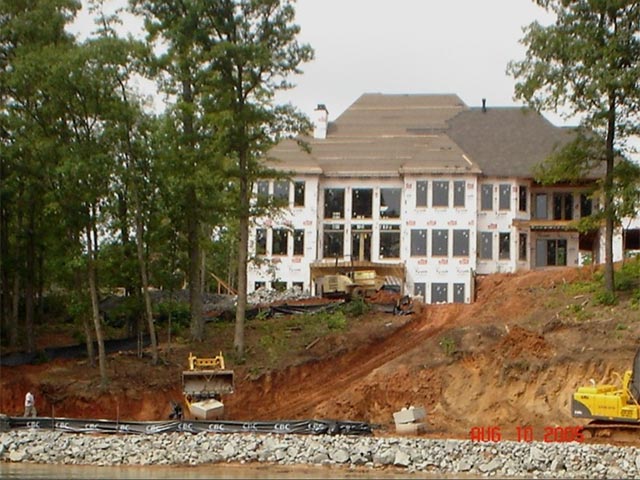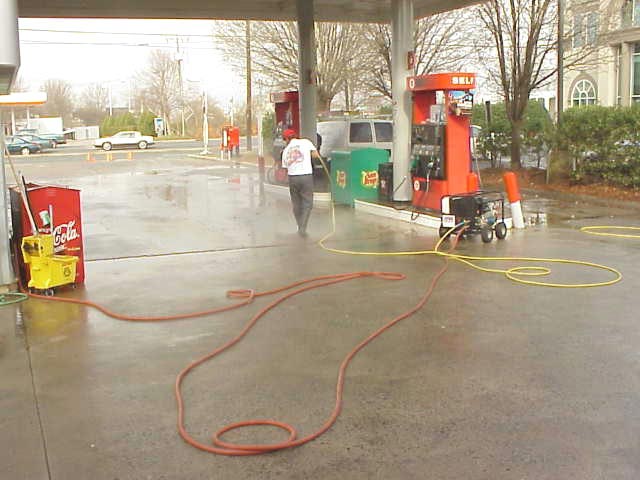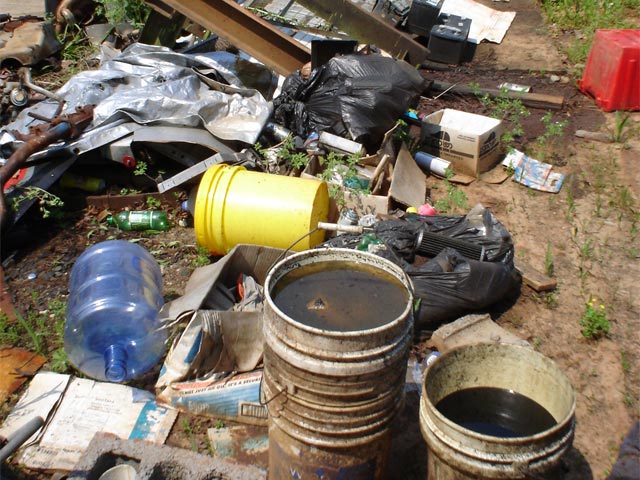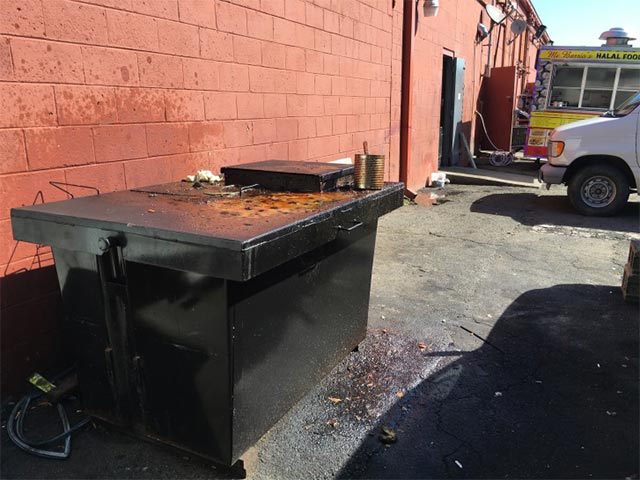Stormwater Pollution
Unlike sanitary sewers, stormwater is UNTREATED and deposits directly into our streams, ponds, lakes and rivers through a system of stormwater drains, pipes and ditches. Anything that stormwater encounters as it flows along the ground can potentially be a pollutant. That includes things like sediment, pet waste, leaky cars, fertilizers and pesticides. So, potentially all that pollution can enter our waterways, which ultimately affects OUR drinking water, aquatic life, recreational opportunities, and overall quality of life.
Decades ago, poorly treated sewage and untreated wastewater piped from businesses was the major source of water pollution in the U.S., but much of that has been corrected as a result of the Clean Water Act. As the U.S. population and especially urban areas have grown, stormwater pollution has become the NUMBER #1 source of pollution in U.S. waterways. Stormwater pollution comes in many different forms and from many different sources.
Common Sources of Stormwater Pollution
Sediment
Sediment is the number one source of pollution in NC waterways. The primary sources of sediment include:
- Construction site activities that remove vegetation and disturb soil. Poor erosion control practices on construction sites contribute to sediment runoff.
- Streambank erosion caused by high volume, high velocity stormwater flowing off impervious surfaces
- Agricultural erosion
- Removal of vegetative buffers along streams and other waterways
- Breakdown of roads, parking lots, and other paved surfaces
- Unpaved roads
- Underground drilling, boring, and excavation
Bacteria
Contamination of waterways by fecal bacteria is a serious problem due to potential impacts to human health and aquatic life. Bacteria and other pathogens can enter our waterways in various ways including:
- Overflowing and leaking sanitary sewer lines. Sewer lines sometimes become clogged with grease, roots and debris, causing sewage to back up and flow out through a manhole or another path. Also, older sewer lines sometimes break or leak at joints in the lines. Sewer lines are often located along streams and other waterways, so the overflowing or leaking sewage has a direct path into the water.
- Pet waste that isn’t picked up by pet owners
- Wildlife and livestock waste
- Failing septic systems
Oil and Grease/Petroleum Hydrocarbons
Oil and grease in stormwater runoff is usually very noticeable by a typical rainbow sheen floating on the water. They can be very harmful to aquatic life and come from many different sources including:
- Poorly maintained cars that leak oil and other fluids
- Gasoline spills at gas stations or pressure washing station pavement into storm drains
- Oily parts leaking/overflowing from oil containers left outside and at vehicle repair shops and other businesses
- Dumping of used oil and other petroleum products into storm drains
- Vehicle accidents that rupture tanks and hoses
- Spills and poor housekeeping around restaurant grease storage bins
Heavy Metals
Heavy metals include zinc, copper, lead, chromium and many others. While they are natural elements found in the earth, they are also used in many products and manufacturing processes and are common stormwater pollutants that have significant impacts on water quality and aquatic life. Some sources of heavy metals include:
- Automobile part wear and tear, such as brake linings and tires
- Corroding metal surfaces
- Atmospheric deposition of particles coming from combustion sources (e.g., power plants)
- Outdoor processes and storage of materials at industrial sites
Fertilizers and Pesticides
Fertilizers and pesticides are among the many common stormwater pollutants that can degrade water quality. Fertilizers contain nutrients, such as phosphorus and nitrogen, that are good for lawns and plants when used properly, but excessive amounts applied to landscapes wash off and pollute streams.
Pesticides are substances, some of which are natural and some manmade, that are used to kill or repel pests such as insects, weeds, rodents, and molds. When used excessively or improperly, pesticides can end up in streams, just like many other pollutants, and are harmful to water quality and aquatic life.
Fertilizers and pesticides are used in many different applications, most commonly in residential and commercial landscaping as well as for agricultural purposes.
Other Sources
There are so many more sources of stormwater pollution that don’t necessarily fit into categories like those mentioned above. Below are some, but certainly not all, additional sources of stormwater pollution:
- Soap and other cleaners from vehicle and boat washing
- Yard waste such as grass clippings and leaves which break down and contribute excess nutrient pollution to stormwater runoff
- Rinsing off paint brushes, mortar equipment, and other items used in construction
- Uncured concrete that is dumped or rinsed off of concrete equipment and delivery trucks
- Pressure washing of buildings, parking lots, driveways, and other areas can discharge sediment, oil, heavy metals, and other pollutants
- Water discharged from pools may contain high levels of chlorine and other chemicals that are harmful to water quality and aquatic life
- Litter dumped on the ground gets washed into storm drains and not only is unsightly, but is considered a type of pollution
- Salt and brine application to roads during the winter
- Illegal dumping of mop water and carpet cleaning wastewater
- Leaking waste bins and ones without lids where stormwater can come into contact with waste materials inside the bins
- Increased water temperature due to stormwater runoff from hot, paved surfaces as well as removal of trees that provide shade along streams, lakes and rivers. Increased temperature affects water chemistry and negatively impacts aquatic life.
































